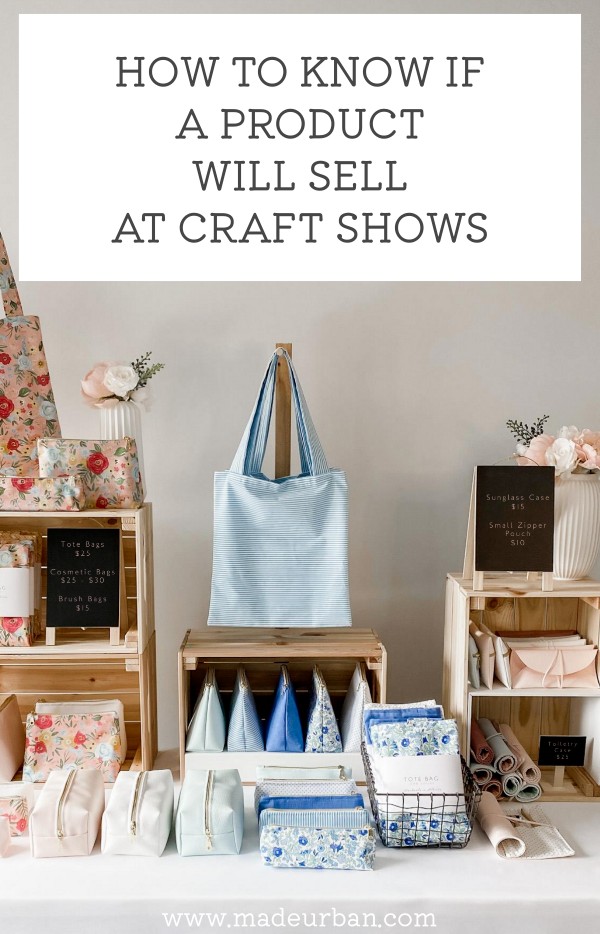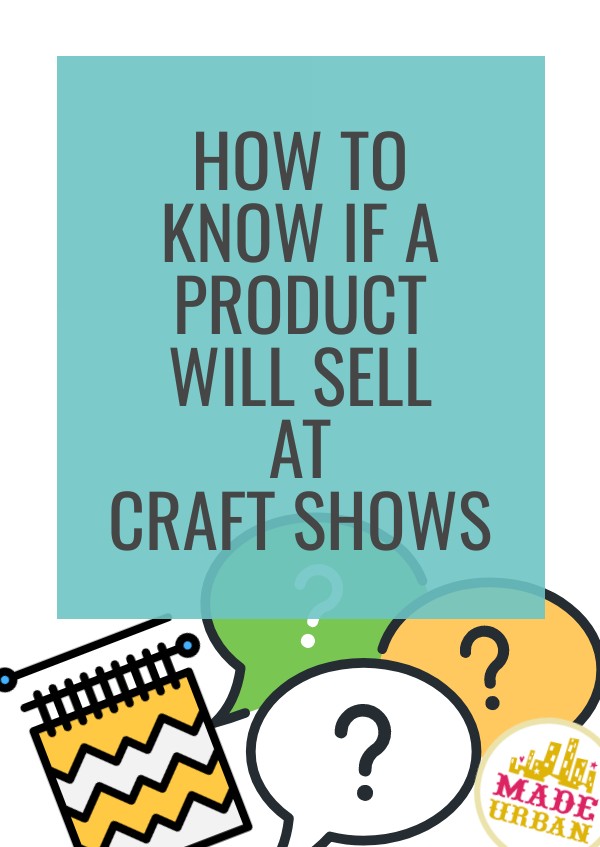How to Know if a Product Will Sell at Craft Shows
In my experience, every craft show is a little different. Every day of a craft show is different.
What flew off the table one day might not get touched the next.
There is no surefire way to know if a product will sell at a craft show.
But there are ways to best-guess and to be fairly certain an item will sell.
Consider the following questions before you spend time and money making a new product.

1) Is it a fit for the event’s shoppers?
First, think about the event and the market it’s targeting.
Based on the name of the event, the branding, the location, etc., who is likely to attend the event?
For example, there’s an annual craft show in my city that tends to attract a younger, more eccentric crowd. It gets a lot of foot traffic because it’s close to a University and a popular area with lots of bars and restaurants. The people who live close to the craft show are in smaller apartments and homes.
If I’m thinking of making cottagecore-style casserole cozies and selling them for $40 – $50, they’re unlikely to sell well at that event. The style, price point, and functionality of that item aren’t really a fit for a young hipster living in a small space with limited storage space.
Consider the demographics of the craft show’s shoppers and whether your product will be appealing to them.
2) Does it appeal to general craft show shoppers?
In general, craft show shoppers tend to spend within a certain budget and buy smaller items that are easier to carry around.
Products that are around $25 and aren’t too heavy or bulky tend to do better at craft shows than products that are $50 and up, and are harder to carry around the event.
Of course, a craft show can attract a different type of shopper (e.g. a home decor and vintage/antique themed event will attract people prepared to spend a little more and who may be looking for larger pieces of furniture), so keep point #1 in mind.
3) Does it align with the craft show’s timeframe?
Consider when the craft show is happening and if your product is related to a current event, holiday, or season.
For example, knitted accessories won’t sell as well at summer events as they will during the winter months.
An evergreen product is ideal for selling at craft shows, but even so, being able to put a spin on it that makes it a little more timely can help push sales.
For example, oven mitts are an item that sell year-round. But I can encourage even more sales if I create Christmas-themed oven mitts for Nov/Dec craft shows and floral-printed oven mitts for spring and summer craft shows.
4) Is it a new spin?
Avid craft show shoppers have seen hand-knitted scarves, handmade soap, and handcrafted jewelry. They’re looking for something new and exciting.
Those items do sell well at craft shows. But it’s important to put a new spin on common craft show items and focus that spin on a target market’s needs/wants.
Check out a few local craft shows to get an idea of what’s being done. If a jewelry vendor notices that every second jewelry booth is selling astrology-themed minimalist gold jewelry, they may want to put a new spin on the astrology-jewelry trend or find another trend to focus on.
How can you make your product different (in a way your consumers care about) or better?
5) Is it purposeful?
Knick-knacks do sell at craft shows. But items that serve more of a purpose tend to sell better and stand the test of time (i.e. long-term sales and repeat customers).
For example, a knitted stuffed animal for adults that might sit on a shelf doesn’t fulfill as meaningful of a purpose as a knitted hot pad that will get used regularly.
If a product is more functional, shoppers will have an easier time justifying the purchase.
6) Is it gift-able?
Lots of people head to craft shows to find unique gifts, and love when you help them buy something for that hard-to-buy-for, has-everything, person.
Would your new product make a good gift? And if so, for whom?
You may also be able to make your new product more gift-worthy through the way you package or present it.
7) Does it have proven sales?
Your new product won’t have sales stats to work with. However, you may be able to gather some useful information.
Have you seen similar products being sold at craft shows? Do Etsy shops selling the product have several sales and reviews for the product?
Have you sold something similar at past craft shows that has done well?
Try to find commonalities your new product shares with past products. It might be a similar style, color, material, etc.
Sales stats for those products can give a small indication of your new product’s potential.


Hey, I’m Erin 🙂 I write about small business and craft show techniques I’ve learned from being a small business owner for almost 2 decades, selling at dozens of craft shows, and earning a diploma in Visual Communication Design. I hope you find my advice helpful!
